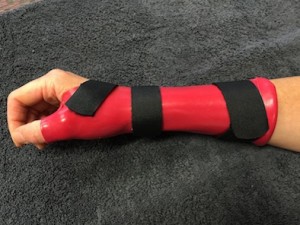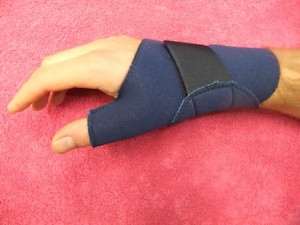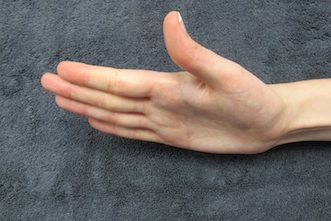What is it?
De Quervain’s Tenosynovitis is the irritation of the two tendons that insert at the base of the thumb as they pass through the extensor sheath. The extensor pollicis brevis and the abductor pollicis longus muscles are responsible for lifting the thumb up and away from the palm. Repetitive movements of the thumb and wrist, as well as activities requiring pinching, can cause pain and swelling around the tendons. Aggravating activities include repetitive wrist movements, such as in the example above, and day-to-day activities such as writing, carrying boxes, turning keys and making the bed.
It is also know as DeQuervain’s Syndrome, gamer’s thumb, texting thumb and washerwoman’s sprain.
Symptoms
Symptoms of De Quervain’s Tenosynovitis occur in the radial side of the wrist (where the thumb is) and include:
• Spasms
• Tenderness
• Burning sensations in the hand
• Swelling in the wrist
• Difficulty gripping with the thumb (and pain when doing so)
The onset of these symptoms is often quite gradual.
Clinical examinations
A hand therapist can assess you for De Quervain’s Tenosynovitis and determine what treatment is necessary. An ultrasound can help confirm diagnosis.
Treatment
De Quervain’s Tenosynovitis can be treated in a splint which supports both the thumb and the wrist and promotes healthy movement. The splint will help to immobilise the affected tendons reducing inflammation and pain. You may be required to wear a splint for 4-6 weeks.
There are a range of different splinting options; your hand therapist can discuss which splint design is best for you depending on your functional demands.
Your therapist will also provide you with:
 • Education about your condition and appropriate treatment
• Education about your condition and appropriate treatment
• Range of movement exercises for uninvolved joints 
• A supportive splint to immobilise, protect and support you thumb and wrist.
• Techniques to help reduce pain and inflammation
• Graduated exercises for range of motion, nerve gliding, and strengthening
Here are some common examples of splinting:
Surgical treatment
Surgical review may be required if your symptoms are not settling. Sometimes a cortisone injection in combination with splinting can help. Your therapist can discuss this with you, and your GP can arrange a referral to a hand surgeon if required.
If you have any questions regarding a condition you have or to book an appointment, feel free to contact us here. We’d be more than happy to help.


